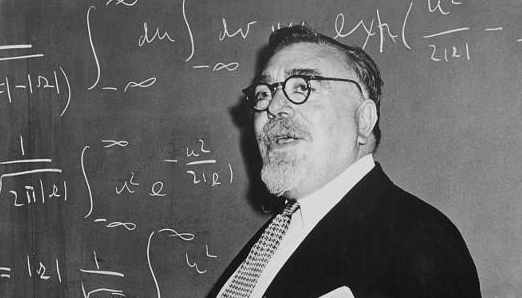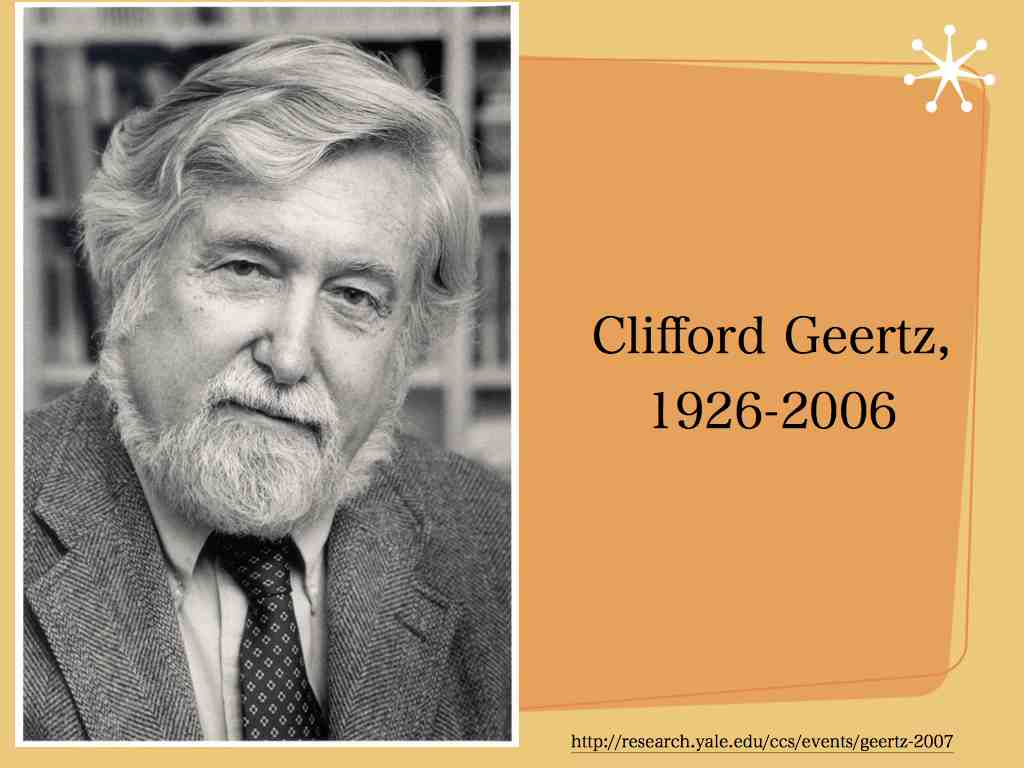美的コミュニケーションとは?
What is Communication in
Esthetics-aesthetics?
美的コミュニケーションとは?
What is Communication in
Esthetics-aesthetics?
|
This research project aims to recapture the concept of arts to ordinary people, especially university students, from artists and other related professionals who dominate the market of art industries. By introducing to elementary concepts of cultural anthropology, the project begins to rethink and criticize the modern stereotype for fine arts as supreme activity by human being. The author introduces the story that any kind of arts products have potential to call to people, then he explains that people has no choice but to response to them that can be analyzed as communication process. A various ethnographic and historical cases are submitted to readers for verifying these cognitive processes in artistic activities. The project postulates that class for anthropology of arts can be suitable for students that want to learn transferable skills in any kind of academic area of post-graduate curricula.
|
The sky above the port was the color of television, tuned to a dead channel. - William Gibson, Neuromancer, 1984「港の空の色は、空きチャンネルの合わせたTVの色だった」(黒丸尚 訳)——ウィリアム・ギブソン
Ethics and aesthetics are one and the same. 倫理学と美学はひとつである(ウィトゲンシュタイン)
芸術とは「作品や活動を通して、その存在
意義や問題
(課題)をもたらすもの全てのこと」を言う。したがって芸術はコミュニケーションのひとつである。それゆえ、芸術を研究対象にする人類学的研究を、芸術人
類学という(→「感覚経験の人類学」)。
***
コミュニケーション (communication)の語源は、ラテン語のコミュニス(communis)すなわち共通したもの、あるいは共有物 (common, コモン)に由来すると言われている。これは、コミュニケーションの本質を理解する上で重要なことである。従って「時間的位相における推移のなかで、情報や データが『共通のものとなる』という現象一般」のことをコミュニケーションとここで定義することができる。
マルクス主義は、人間の経済活動における 生産手段の〈共有〉を目標とした社会運動論であった。マルクス主義者たちはその運動が結果的に私的所有 の廃絶を生じるだろうと予測するだけでなく、人間の人為的な活動(=革命)をとおして、そのような未来を早期に実現しようとした社会実験に着手した。その 意味ではマルクス主義は理論から実践が生まれるのではなく、実践から理論が生まれるというユニークな性格を持っていた。だが、それがどうしてコミュニケー ションと関係するのだろうか。カール・マルクス(1845)はいう、生業手段の増大(=生産)は、再生産(=生殖)活動を活性化させ、人口の増大につなが ることになる。人口の増大は人間のあいだの「交通」(Verkehr, intercourse)を前提とする。マルクスによると、この交通とは、交換、交易、関係のネットワーク、コミュニケーション、戦争や交渉そして性交 (セックス)のことを意味する。交通は、再度また人間たちの生産によって決まる(=規定される)のだ、と。ここで抑えておくべきことは、交通(=コミュニ ケーション)をさらに促進するために生まれた理論は、産みだした実践により、新たな理論の交換(=コミュニケーションの交通)を必要とすることだ。マルク スによる160年以上も前の予言は人類の共通の理想としての共通・共感・共同という一体性が強調されているが、人間社会の発展はコミュニケーションの増大 にほかならないということを適確に表現している。
Sergey Brin and Lawrence Page (1998:111)/岡本太郎『アヴァンギャルド芸術』1950年
Network Control Program を使っていたローカルなタイムシェアリング・システムを動かすためのARPANET が、TCP/IPというプロトコルとWWW (World Wide Web)というハイパーテキストシステムを採用することで、インターネットという全く別のグローバルなコミュニケーション手段ができてしまったことと、実 は よく似てはいないだろうか。通信量の増大への計算機の負荷を分散し解消させることを目的としたシステムが、WWWというメディアを地球上に瞬時に膨大な情 報に載せて伝送するものへと、量的にも質的にも根本的に大変化したのであり、そのことは結果的に人間のコミュニケーションの様相を根本的に変えてしまった のだ(レヴィンソン 2000)。
コミュニ ケーションの日本語への翻訳は多様で辞書をみても、伝達、報道、文通、伝染(cf. communicable disease)、連絡、情報、通信、交通(コミューター)などがあり、何かが伝えられていることを指し示している。しかし、これは伝えられることを通し て、「何かが〈共有〉される」というある事態の結果、ないしはその進行のプロセスのことを意味していると理解したほうがよい。したがってコミュニケーショ ンのもっとも適切な翻訳は「伝達共有過程」ないしは「伝達の共有」というのが、もっとも語義に叶ったものになる。ここから展開すると、コミュニ ケーション はメッセージの相互のやりとり、ないしはそのようなやりとりの結果〈ある事象が共有されている状態〉になったということになる。
ノーバート・ウィナーはメッセージを次の ようにそっけなく定義している。つまりメッセージとは「時間内に分布した測定可能な事象の離散的あるい は連続的な系列のこと」であり「電気的・機械的な方法、あるいは神経系などによって伝送されるもの一切を含んでいる」と(ウィーナー1962:11)。こ のような〈情報の共有性〉の確保について、もっとも簡潔で合理的なモデルを与えたのが、クロード・シャノンとウォーレン・ウィーバー(2009)であっ た。情 報が正しく伝わったり、伝わらなかった(言い換えると、情報が共有されたり、共有されなかったり)するには、情報の発信者と受け手が、別々の存在であると いうことが、このモデルの前提になる。それらの間で、情報がやりとりされ、最終的に〈共有〉されるわけである。シャノンは情報を数学的にとらえ、電気通信 的なモデルで表現した。それによると情報源は確率過程として理解され、エントロピー関数により情報量を定義した。


シャノンとウィーバーの理論の要衝は情報 をいかに迅速かつ正確に伝えることを実現するという数学モデルの創案にあった。しかし、人間を含む生物 一般や、生物の体内のシステムにおいても、このような機能プロセスはよく観察されるために、コミュニケーション一般のもっともシンプルで合理的なものとし て利用することができる。それは情報源(「情報発信者=符号器(transmitter-encoder)」)は、伝えたいメッセージを選択し、それを信 号に変え、コミュニケーションチャンネル(コミュニケーション媒体で、音波、電線、電波、インターネットのケーブルなど)を通して、受信体(「受信者=復 号器(receiver-decoder)」)に送られる。この伝達過程で、情報はさまざまな妨害をうけ、正確に伝えられないことがある。それをこのモデ ルはノイズと定義する。受信者は受け取った信号を再びメッセージに解読して、情報発信者の発したメッセージを理解しようとしている。情報発信者のメッセー ジと受信者による解読内容が合致した(共有された)時、コミュニケーションが成立したというのである。シャノンウィーバーのコミュニケーションモデルを すっかりそのまま援用して、符号と復号の過程として、美的コミュニケーションに当てはめると図.1のようになる。図のなかで、カントがいう論理的に表現で きない趣味判断にもとづく「美なるもの」という感覚のうち「審美的霊感A」(esthetic inspiration A)は、芸術家によるものであり、鑑賞者である僕たちが感じる「美なるもの」という感覚が「審美的霊感B」である。芸術家=作品製作者は自分が感じ取った 審美的霊感をエンコード=符号化し、はじめて美的メディアの中で表現行為が可能になる。他方、受容者である僕たちも、そのメッセージをデコード=復号化 し、つまり芸術家が投げかけた暗号を解読しなければ審美的霊感を感じとることができないのだ。ここでは美的コミュニケーションの共有化の度合いで美的コ ミュニケーションが成功したか否かを判断できる。すれ違いがおこり、作者が美しく描いたつもりでも、受け手(=依頼者)が美しく感じなければコミュニケー ションは失敗する。つまり美的コミュニケーションもまた美的情報量の関数として定義可能になることがわかる。

シャノンとウィーバーは1949年に『サ イエンティフィック・アメリカン』に寄稿した「分析的コミュニケーション・スタディーズ」と冠した論文 において、コミュニケーションについて次のように書いている。
コミュニケーションという言葉は、ある精神(マインド)が別の精神に影響を及ぼすようなものによって引き起こされる諸手順のすべてを含む、 はなはだ広い意味において、ここで使われることだろう。もちろん、コミュニケーションには、書かれ話された言葉(スピーチ)のみならず、音楽、絵画芸術、 演劇、バレー、それどころか、すべての人間行動までも包摂している。ついでながら言うと、コミュニケーションをさらに広い定義でとらえることは妥当なもの となるだろう:つまりそれには、あるメカニズムが別のメカニズムに影響を与えることによる手順を含めてもよい(例えば、航空機を追跡し想定される将来の位 置を計算する自動装置は、その航空機を追尾する誘導ミサイルに影響を及ぼすように)(Shannon and Weaver 1949:3:シャノンとウィーバー 2009:15-16)[訳文は筆者による]。
シャノンとウィーバーによる、この『サイ エンティフィック・アメリカン』論文が重要な点は、彼らのコミュニケーションの定義について「情報論的 で狭量である」という従来の大方の人が批判する見方は純然たる彼らに対する誤解に由来することを示している。シャノンとウィーバーもまた、コミュニケー ションの過程は経時的あるいは因果的に複雑な状況を生起するものであるという僕たちの常識と共通していることを、ここで改めて確認しておこう。実際2人の コミュニケーションの数理学者のうち、シャノンは先端的なことを説き、ウィーバーは彼のすばらしい理解者であり、シャノンの数学理論を巧みな比喩を使って 適切に表現したと言われている。

人間がおこなうコミュニケーションを僕 は、人間コミュニケーションあるいはヒューマン・コミュニケーションと呼ぶ。人間コミュニケーションを成 り立たせる媒体は社会である。コミュニケーションがうまくなりたたない時、それをコミュニケーション不全あるいは和製英語ふうに「ディスコミュニケーショ ンI」と呼んでおこう。コミュニケーション不全とは、想定されたコミュニケーションのアウトカムが不十分・不完全・不能のいずれかである。ただし、語の厳 密な意味でのディスコミュニケーションには、それ以外にコミュニケーションのアウトカムに関する価値評価がゼロ(零)のようなコミュニケーション(dis-communication)の様態を 含むことがわかる。これは送り手の情報がノイズによって100%置き換わり、かつ受け手が「たぶんこのようなことだろう」と勝手に解して、それでいて両者 のあいだで不都合が起こらない状態のことである。言い換えるならば、完全にコミュニケーションがなくても、双方あるいはどちらか一方はコミュニケーション の価値評価に関する判断を継続している状態である。これを「ディスコミュニケーション II」と呼んでおこう。この事例は、コミュニケーションを広範な現象とみるシャノンとウィーバーの知的遺産を正しく引き継いだ論理的帰結である。奇妙な符 合であるが、美術館の前で、抽象芸術あるいは現代芸術の作品の前で佇む人達は、このディスコミュニケーション状態にあると言えるだろう。


文化人類学者のクリフォード・ギアーツは 「厚い記述」という論文 (Geertz 1979:6-7)の中で、まばたきを例にして、コミュニケーションにおけるメッセージの送受信におけるメッセージの解読過程について有名な議論をおこ なっている。


少年がこちらをみて、目配せとしてのウィ ンクした時には、我々はそれを彼がいたずらを成功させて、こちらに合図を送ったものとして解読すること もできるし、他方で、ただ単に眼にゴミが入ったということも考えられる。このメッセージを正しく解読し、情報を〈共有〉するためには、メッセージの送り手 の少年と、それをみて二通り(あるいはそれ以上の可能性)の解釈をおこなう観察者である〈私〉との関係性や、それらがおこなわれた社会的文脈を考慮する必 要があるということだ。これもシャノンとウィーバーのいう、ある精神(マインド)が別の精神に影響を及ぼすということであり、その影響を与える要素(ノイ ズ)として文脈を考えることだ。
メッセージは多義的に解釈(解読)される 可能性があり、また偶然の現象(眼にゴミが入る)と必然の現象(自己自身と彼の間の関係や出来事がおき た時の状況からそのように判断できる)を、文化人類学者はさまざまな状況を手がかりに解釈しなければならない。それが、ギアーツのいうところの文化の理解 にほかならない。文化人類学の観点からみて、人間コミュニケーションについての研究はまさに(冒頭で主張した)文化についての研究にほかならないことを示 しているのである。
★芸術の創造者と芸術の受容者の関係(アート・ネクサス:アルフレッド・ジェル)
◎「美的機能は個々人の生活と社会の生活 の中で重要な位置を占めている」(Jan Mukařovský, 1966)[→「ヤン・ムカ ジョフスキーと美的機能」からの引用]
| Jan Mukařovský (11 November 1891 –
8 February 1975) was a Czech literary, linguistic, and aesthetic
theorist. Mukařovský was professor at the Charles University of Prague. He is well known for his association with early structuralism as well as with the Prague Linguistic Circle, and for his development of the ideas of Russian formalism. Among other achievements, he applied ideas from Geneva linguist and semiotician Ferdinand de Saussure to the analysis of literary and artistic expression, systematically applying and extending the concept of linguistic function to literary works and their reception in different periods. Mukařovský had a profound influence on structuralist theory of literature, comparable to that of Roman Jakobson. |
プラハ・カレル大学の教授であった。初期の構造主義やプラハ言語学サークルと関わり、ロシア形式主義の思想を発展させたことで知られる。また、ジュネーブ の言語学者・記号学者フェルディナン・ド・ソシュールの思想を文学・芸術表現の分析に応用し、言語機能の概念を文学作品とその受容に体系的に適用・拡張す るなどの業績がある。ムカジョフスキーは、ローマン・ヤコブソンに匹敵する文学の構造主義理論に大きな影響を与えた。 |
| Mukařovský studied linguistics
and aesthetics at the Charles University in Prague and graduated in
1915. In 1922 he received his doctoral degree. Until 1925, he taught in
Pilsen, then at a grammar school in Prague. In 1926 he was among the
founders of the Prague Linguistic Circle, along with his close friend
Roman Jakobson. In 1929, Mukařovský received his habilitation with the
Máchův Máj. Estetická study, a work examining the romantic Czech poet
Karel Hynek Mácha in the field of literary aesthetics. In 1934, Mukařovský was appointed professor at the University of Bratislava in Slovakia. In 1938 he was appointed associate professor of aesthetics at the Charles University in Prague, which, however – like all other Czech universities – was closed by the occupying Nazis in November 1939. From 1941 to 1947 Mukařovský worked as an editor. After World War II, Mukařovský was favorable towards communism, and in 1948, the year of the communist coup d'état, Mukařovský became full professor at the reopened university in Prague. In the same year he was also elected Rector, a post he held until 1953. Due to increasing Stalinist pressure, Mukařovský recanted his prewar semiotic structuralism. In 1951 Mukařovský was appointed the director of the Institute for Czech Literature of the Czechoslovak Academy of Sciences, and remained in that position until 1962. |
ムカジョフスキーは、プラハのカレル大学で言語学と美学を学び、
1915年に卒業した。1922年には博士号を取得した。1925年までピルゼンで教鞭をとり、その後プラハの文法学校で教壇に立つ。1926年には、親
友のローマン・ヤコブソンとともに、プラハ言語学会の創設者の一人となる。1929年、ムカジォフスキーは、Máchův
Máj.のハビリテーションを受けた。これは、チェコのロマン派詩人カレル・ヒネク・マーチャを文学的美学の観点から考察した研究である。 1934年、スロバキアのブラチスラバ大学教授に就任した。1938年、プラハのカレル大学の美学准教授に任命されたが、他のチェコの大学同様、1939 年11月に占領下のナチスによって閉鎖された。1941年から1947年までは、編集者として活躍した。第二次世界大戦後、ムカジョフスキーは共産主義に 好意的で、1948年、共産党のクーデターが起きた年に、再開されたプラハの大学で正教授となった。同年、学長にも選出され、1953年まで在任した。ス ターリンの圧力が強まり、ムカジォフスキーは戦前の意味論的構造主義を撤回した。1951年、チェコスロバキア科学アカデミーのチェコ文学研究所の所長に 就任し、1962年までその職を務めた。 |
| Mukařovský's significance is not
limited to his membership in the Prague Linguistic Circle. His ideas
extended beyond the realm of linguistics into the fields of poetics and
aesthetics. However, reception of his theories in the West remains
limited, due in part to linguistic barriers. Mukařovský proposed to understand the literary work as a complex form. He distinguished four basic functions of language: the representative, expressive, appellative and the "aesthetic" function (Mukařovský 1938). Karl Bühler had introduced the first three functions in the "Theory of Language" (Bühler 1934) and Mukařovský added the fourth. Emphasis on the aesthetic is also reflected in his fundamental essays on the question: What is art? In "Art as Semiotic Fact," Mukařovský emphasized two characteristics of the artwork: The autonomic function and the communicative function. Prior to World War II, Mukařovský, along with Jakobson, was close to members of the Czech avant-garde, interesting himself particularly in the Devětsil group and the Prague surrealist group. |
ムカジョフスキーは、プラハ言語学会の会員であったことだけが重要なの
ではない。彼の思想は言語学の領域を超えて、詩学や美学の分野にも及んでいる。しかし、西洋では言語の壁もあり、彼の理論の受容はいまだ限定的である。 ムカジェフスキーは、文学作品を複雑な形式として理解することを提案した。彼は、言 語の基本的な機能を、代表的機能、表現的機能、呼称的機能、そして「美的」機能の4つに区別した(Mukařovský 1938)。 最初の3つの機能は、カール・ビュラーが『言語論』(ビュラー1934年)で紹介していたが、ムカジョフスキーはその4つ目の機能を追加した。美学的なも のの重視は、この問題についての彼の基本的なエッセイ「芸術とは何か?」にも反映されている。ムカジョフスキーは、「記号論的事実としての芸術」におい て、芸術作品の二つの特性を強調した。「自律的機能」と「伝達的機能」で ある。 第二次世界大戦前、ムカジョフスキーはヤコブソンとともにチェコ前衛芸術のメンバーと親交を持ち、特にデヴィエチル・グループやプラハのシュールレアリス ト・グループに関心を寄せていた。 |
| Dějiny české literatury
(1959–1961), history of Czech literature, chief editor, three volumes Studien zur strukturalistischen Ästhetik und Poetik (1974) On Poetic Language (1976), translated by John Burbank and Peter Steiner The Word and Verbal Art: Selected Essays (1977), translated and edited by John Burbank and Peter Steiner Kapitel aus der Ästhetik (1978) Structure Sign and Function: Selected Essays (1978), translated and edited by John Burbank and Peter Steiner Aesthetic Function, Norm and Value as Social Facts (1970), Mark E. Suino translator |
Dějiny české literatury
(1959–1961)、チェコ文学史、編集長、全3巻 Studien zur strukturalistischen Ästhetik und Poetik (1974) 詩的言語について (1976)、ジョン・バーバンクとピーター・スタイナー訳 言葉と言葉の芸術:選集 (1977)、ジョン・バーバンクとピーター・スタイナー訳・編 1978年 『美学的諸概念』 1978年 『構造、記号、機能:選集』(ジョン・バーバンク、ピーター・スタイナー訳・編) 1970年 『美的機能、規範、社会的価値』(マーク・E・スイノ訳) |
| https://bit.ly/3wwk7Mr. |
https://www.deepl.com/ja/translator. |
★ムカジョフスキーの4機能論[→「ヤン・ムカジョフスキーと美的機能」からの引用]
ムカジェフスキーは、文学作品を複雑な形式として理解することを提案し た。彼は、言 語の基本的な機能を、代表的機能、表現的機能、呼称的機能、そして「美的」機能の4つに区別した(Mukařovský 1938)。 最初の3つの機能は、カール・ビュラーが『言語論』(ビュラー1934年)で紹介していたが、ムカジョフスキーはその4つ目の機能を追加した。美学的なも のの重視は、この問題についての彼の基本的なエッセイ「芸術とは何か?」にも反映されている。ムカジョフスキーは、「記号論的事実としての芸術」におい て、芸術作品の二つの特性を強調した。「自律的機能」と「伝達的機能」で ある。
●おまけ[artproject]:「観る人を共振させる美術館の試み:芸術鑑賞行為にお けるインタラクティブ」プロジェクト(仮題)
理論的フレーム
1)認知研究——芸術に感動している時にどのような生理的かつ認知科学的反応がおきているのか?
2)歴史研究——芸術の生産者と消費者の関係は、感動させる人と感動させる人の関係で説明できるのか?
3)社会研究——「観る人を共振させる美術館」にするためには、どのような社会教育、美術館の側のアウトリーチ、法改正などが必要か?
とりあえず、研究グループを組織して、わいわいがやがや議論すること。
●Caune, Jean, Esthétique de la communication, Presses Universitaires de France 1997 Que sais-je? 3259
++
●
This research project aims to recapture the concept of arts to ordinary people, especially university students, from artists and other related professionals who dominate the market of art industries. By introducing to elementary concepts of cultural anthropology, the project begins to rethink and criticize the modern stereotype for fine arts as supreme activity by human being. The author introduces the story that any kind of arts products have potential to call to people, then he explains that people has no choice but to response to them that can be analyzed as communication process. A various ethnographic and historical cases are submitted to readers for verifying these cognitive processes in artistic activities. The project postulates that class for anthropology of arts can be suitable for students that want to learn transferable skills in any kind of academic area of post-graduate curricula.
この研究プロジェクトは、芸術市場を支配する芸術家や専門家から、一般の人々、特に大学生に芸術の概念を取り戻すことを目的としています。
文化人類学の初歩的な概念を導入することで、芸術は人間の至高の活動であるという現代の固定観念を再考し、批判することから始めます。著者は、どんな芸術
品も人に呼びかける可能性があるという話を紹介し、人はそれに反応するしかなく、それはコミュニケーションのプロセスとして分析することができると説明し
ます。このような芸術活動における認知過程を検証するために、様々な民俗学的・歴史的事例が読者に提供されます。このプロジェクトは、芸術人類学のクラス
が、大学院のカリキュラムのあらゆる種類の学問領域で通用するスキルを学びたい学生に適していることを仮定しています。
●オストラネーニエ
「日常言語は、自動化し無意識化した日常を自然化する機能(=ドクサ化機能)をもつ。しかし、日常言語による現前化したものだけが「現実」
ではないことは、我々が非日常的なことを出会ったり、事故にあったりすることで、その事実
は開裂するかのごとく出現する。その日常性を破壊する、ないしは、ちょっと傷つけることにより、日常性が開裂する機能をもつ言語あるいは言語機能をもつ実
体が存在する。それが詩的言語である。詩的言語は、ヴィクトール・ボリソビッチ・シクロフスキー(Viktor Borisovich
Shklovskii,
1893-1984)らによるロシア・フォルマリズムの運動のなかで、日常言語との区別のなかで定式化された。オストラネーニエ(ostranenie)
は、芸術の手法としての非日常化、あるいは異化(いか)として理論化されたものであり、詩的言語は、これにより日常言語により構築される世界を打破し、芸
術を我々の前に開示するのである。オストラネーニエ(ostranenie, ロシア語 остранение)
は、英語の翻訳では「見慣れないようにすること=異化(Defamiliarization)」と紹介されている。」
リンク
文献
その他の情報
Copyleft, CC, Mitzub'ixi Quq Chi'j, 1996-2099

Do not paste, but [Re]Think our message for all undergraduate students!!!
Copyleft,
CC, Mitzub'ixi Quq Chi'j, 1996-2099